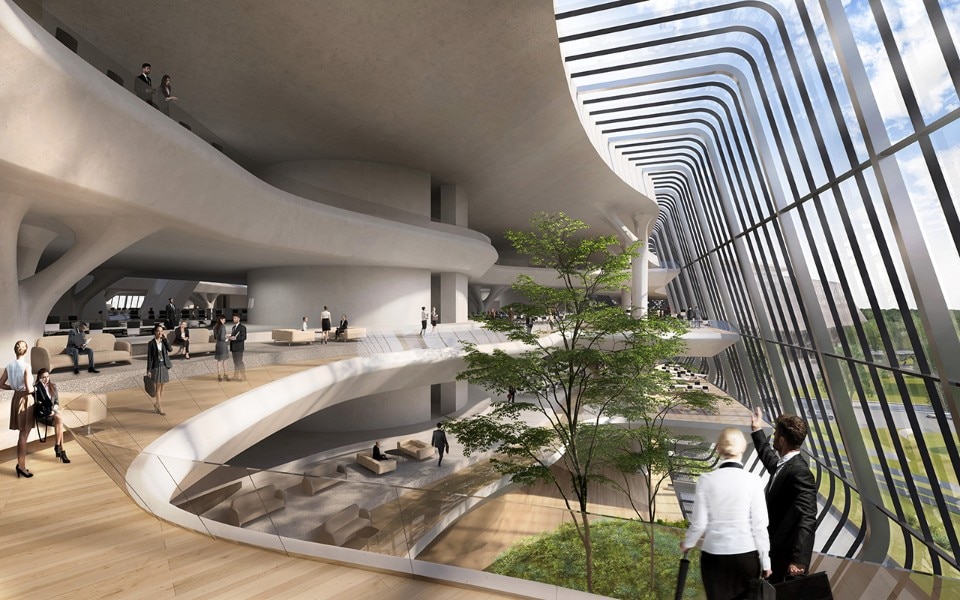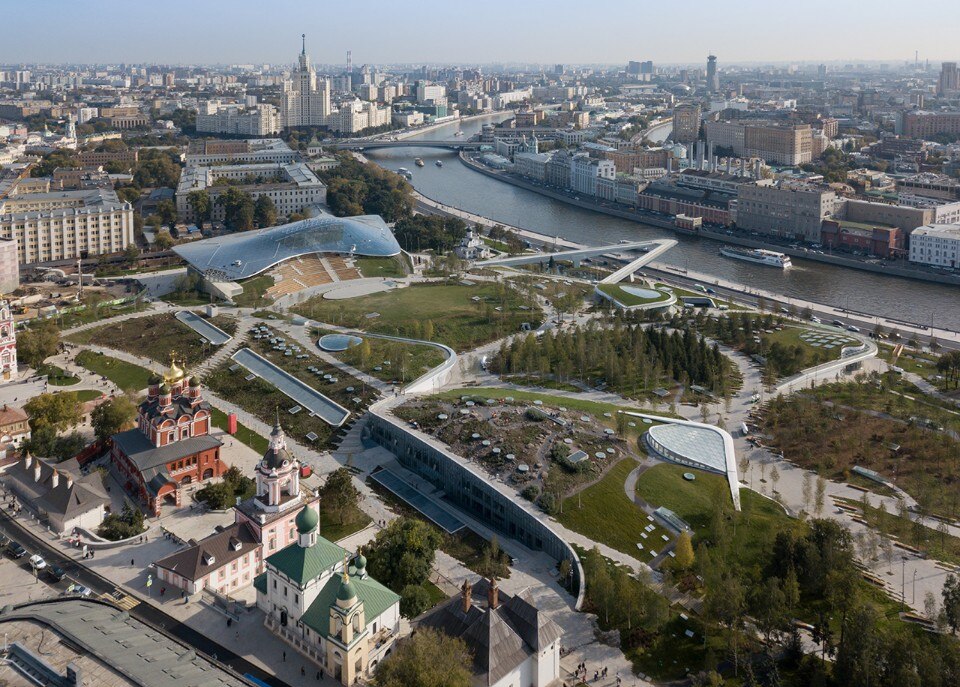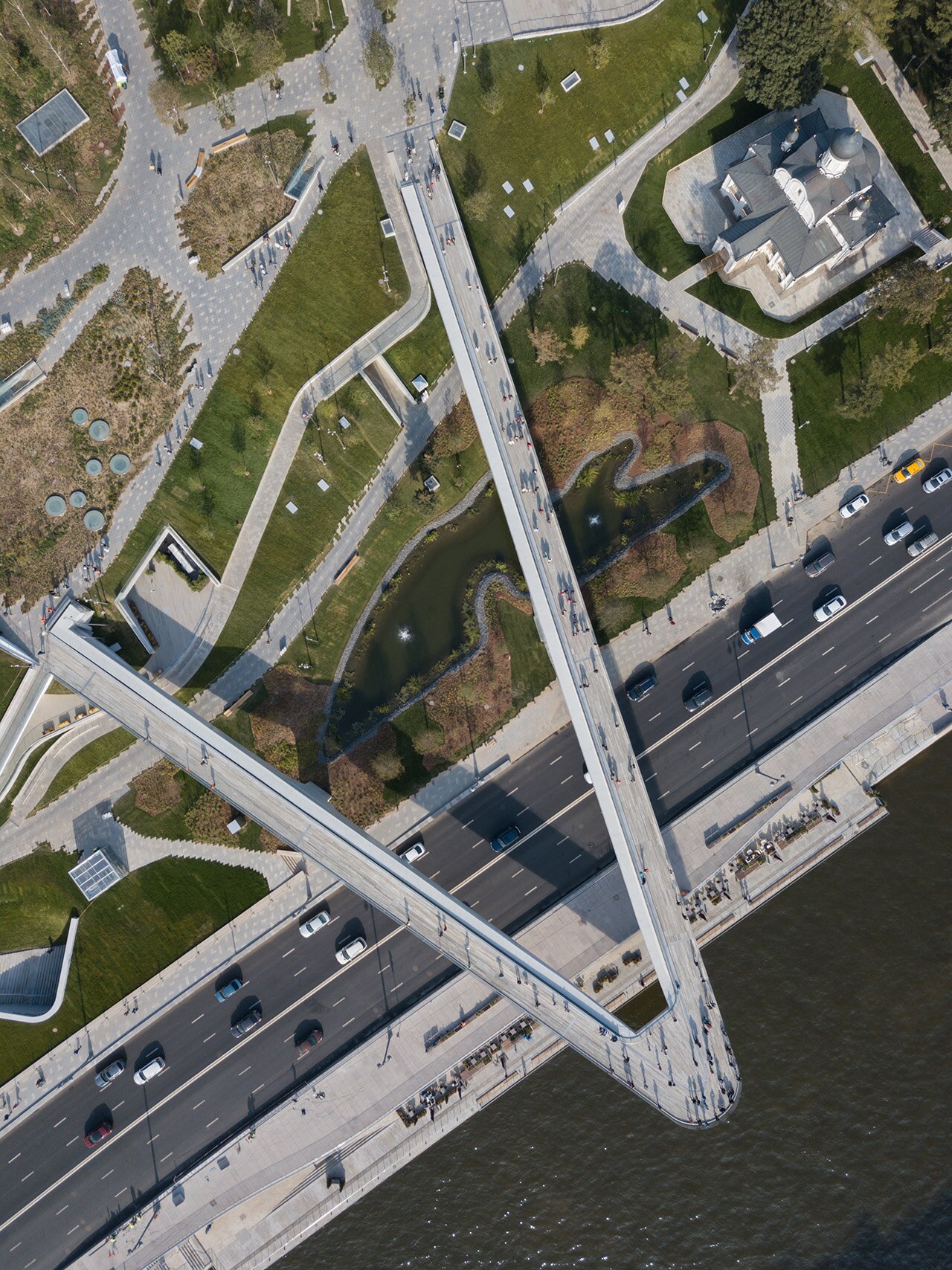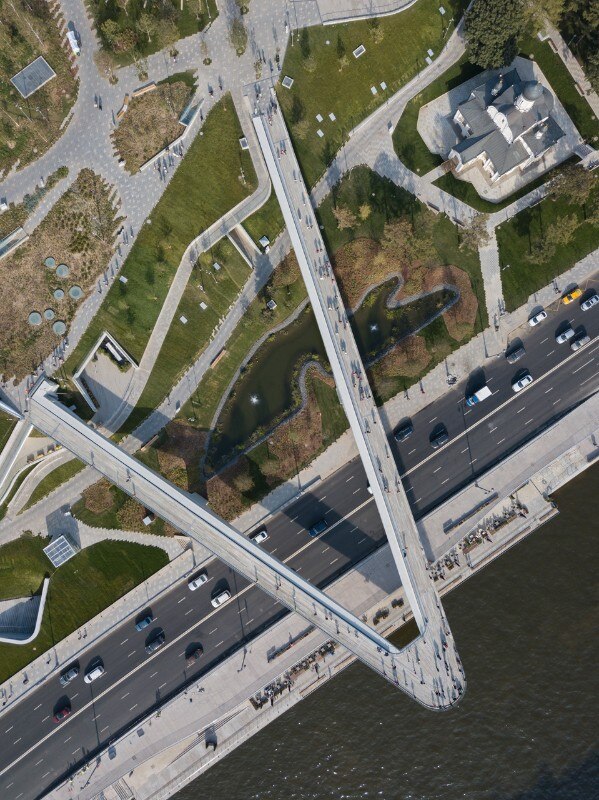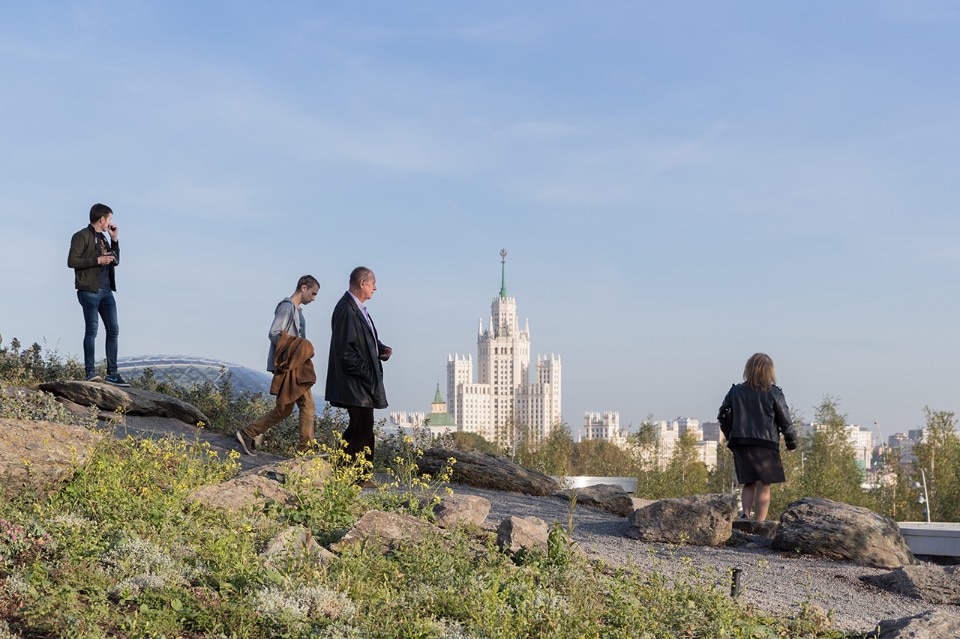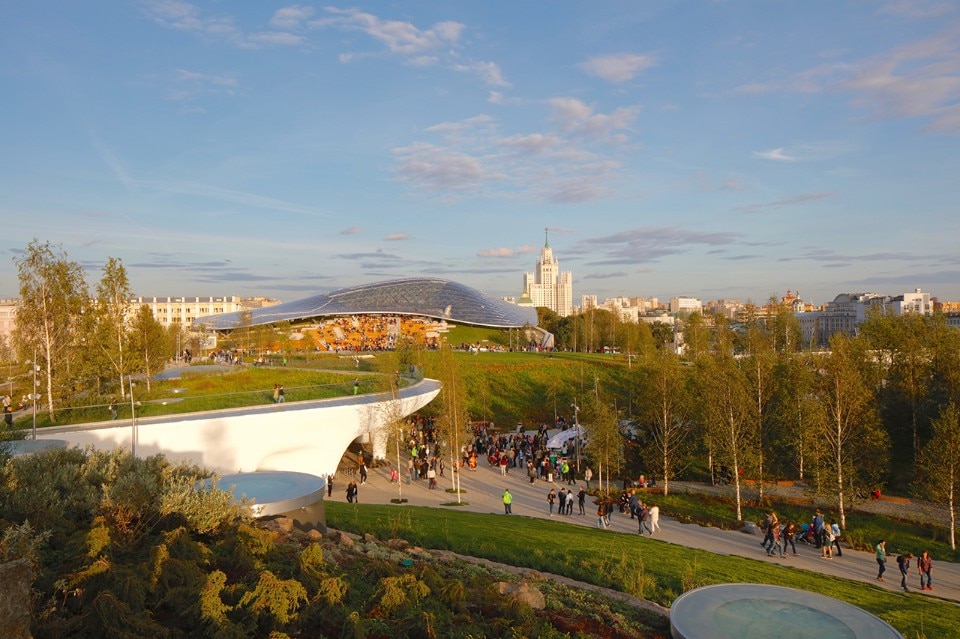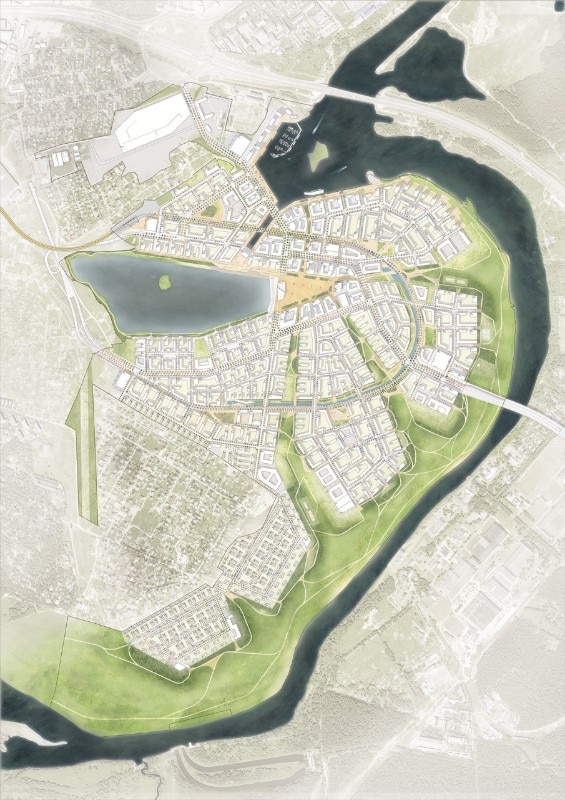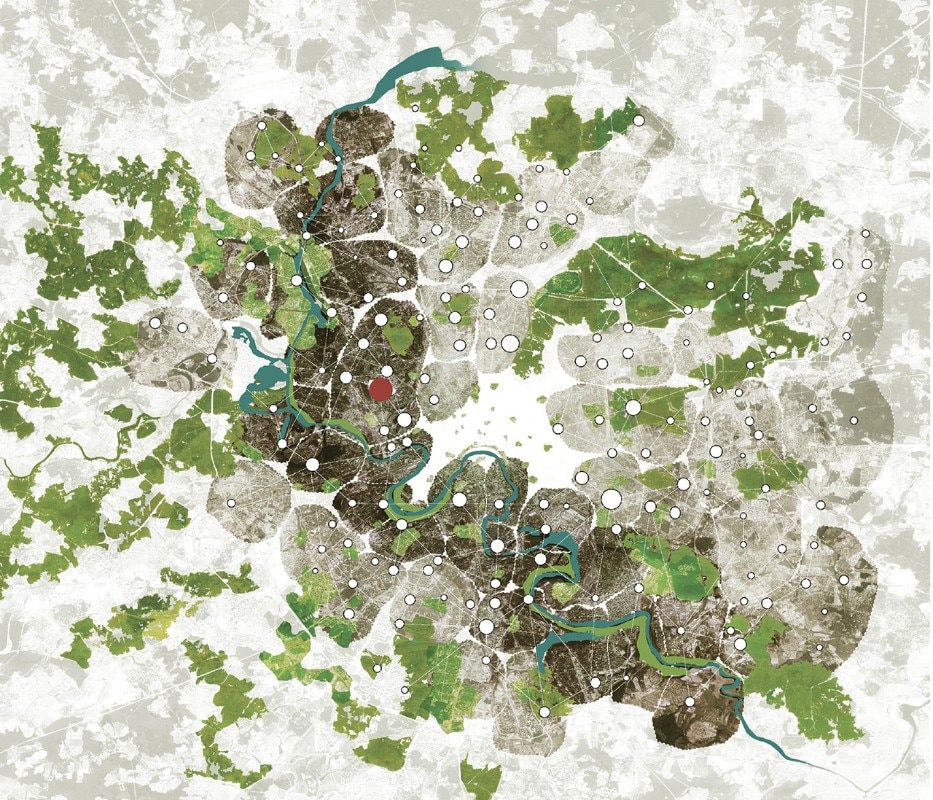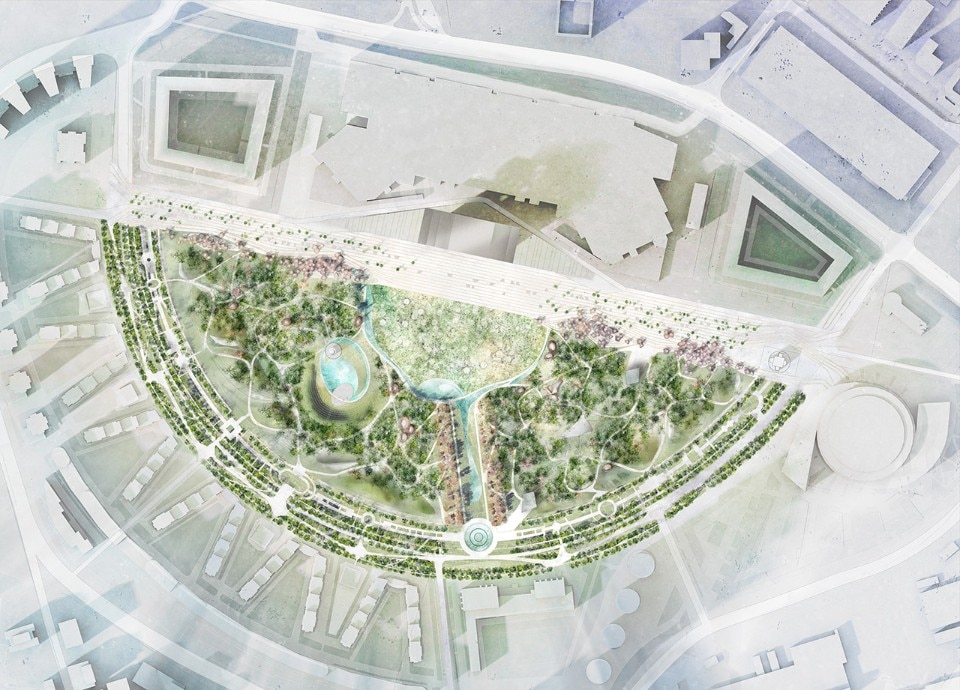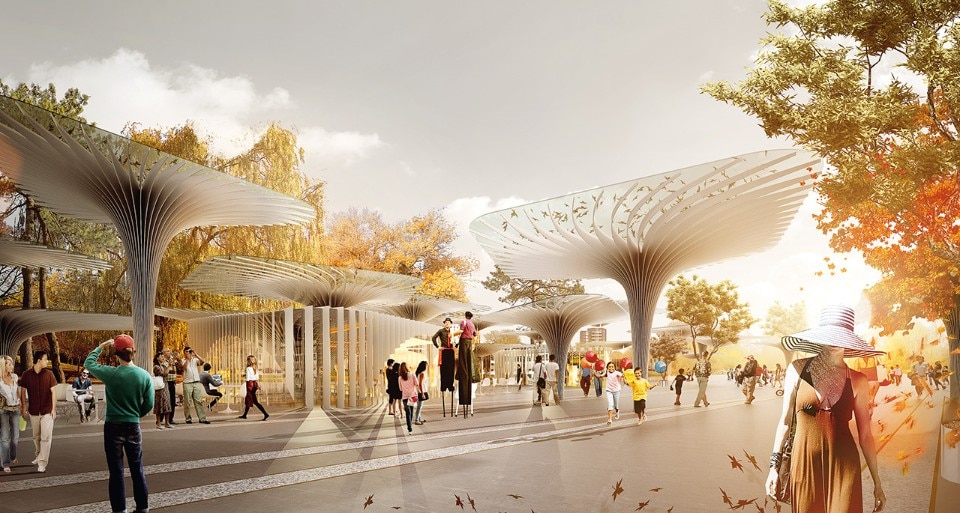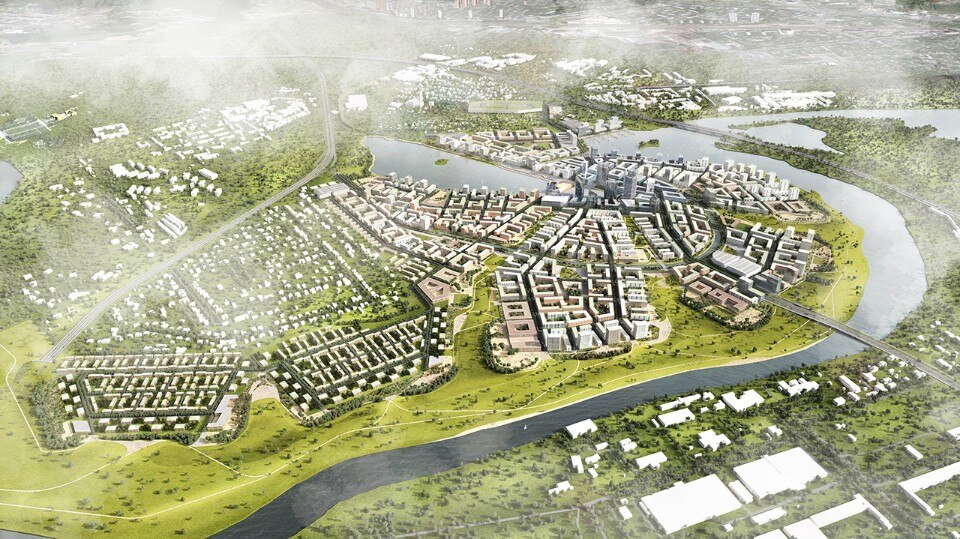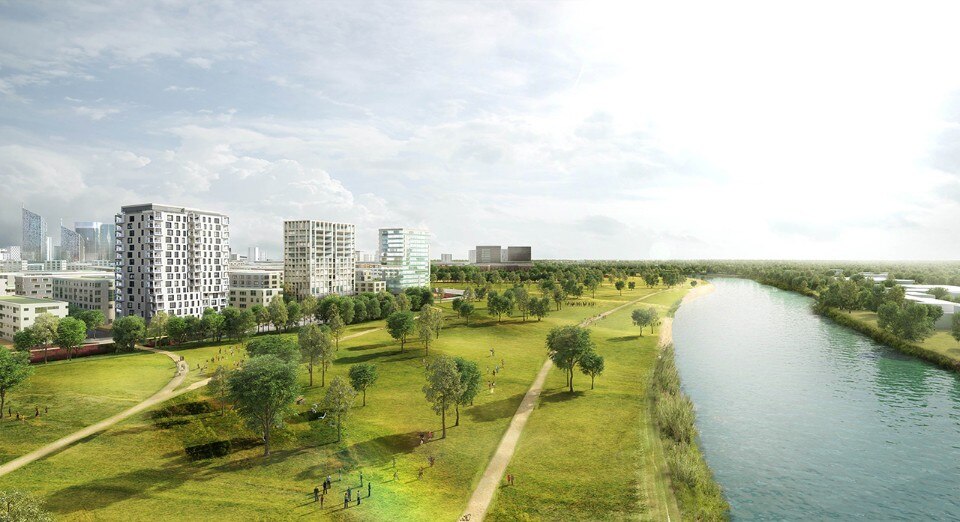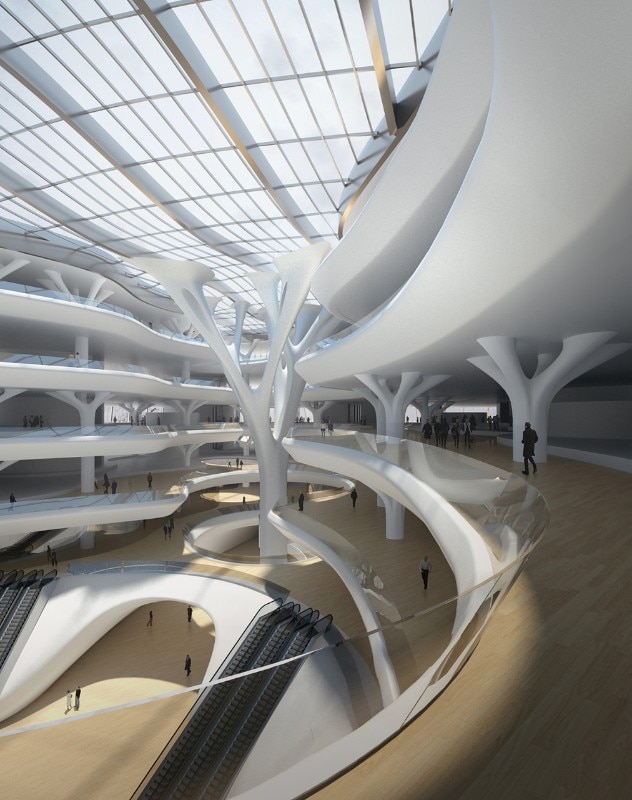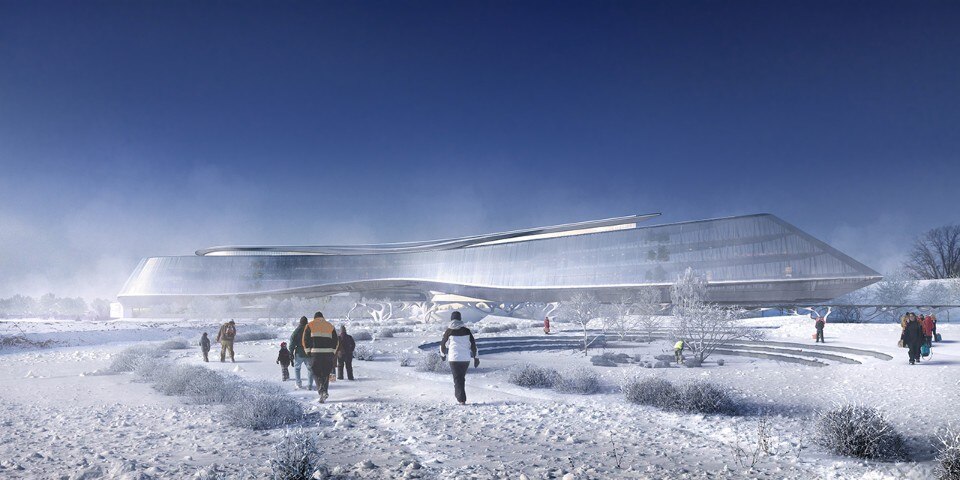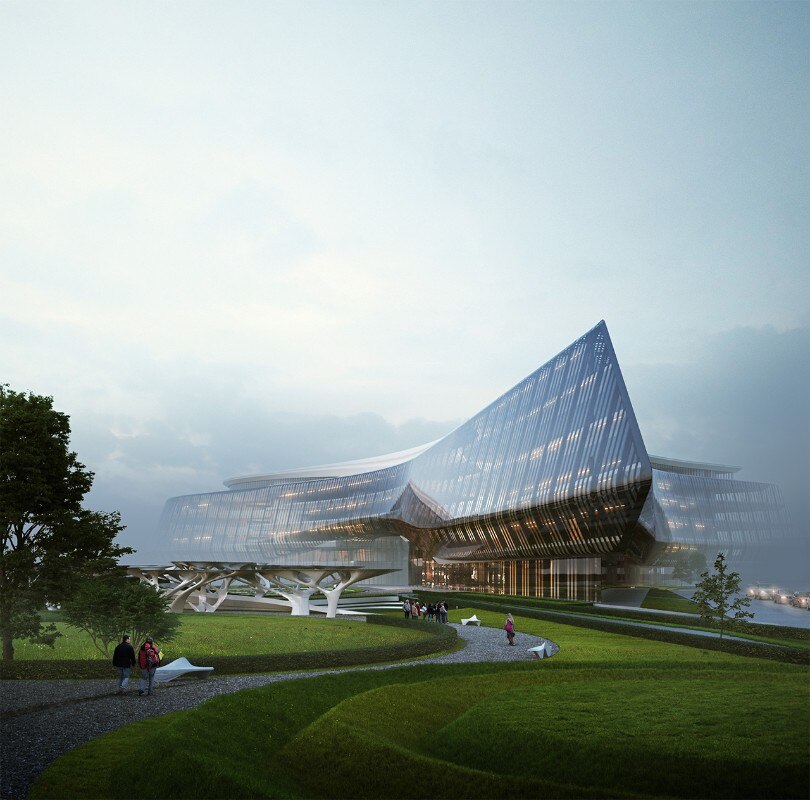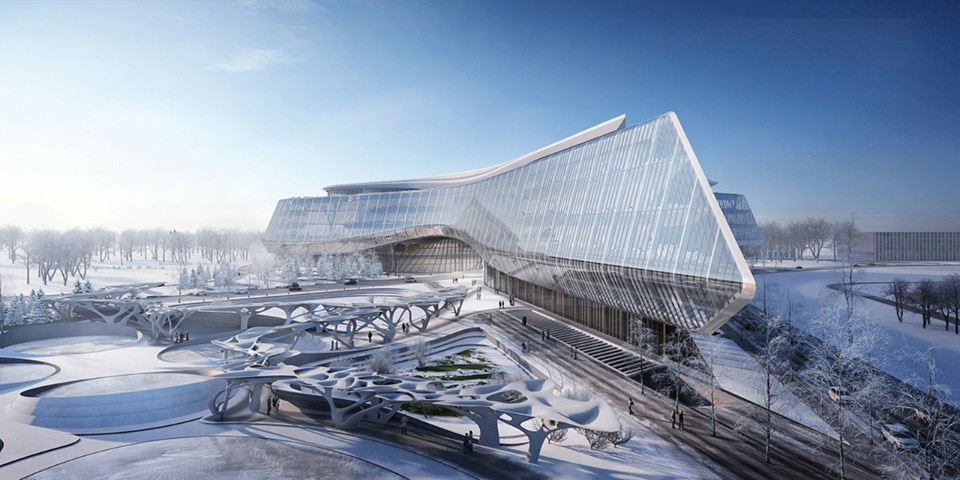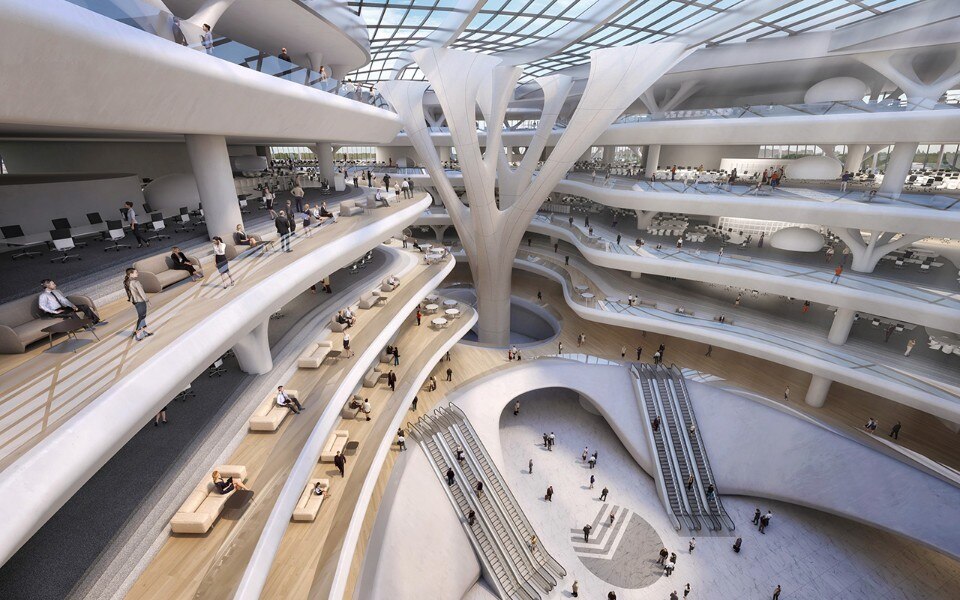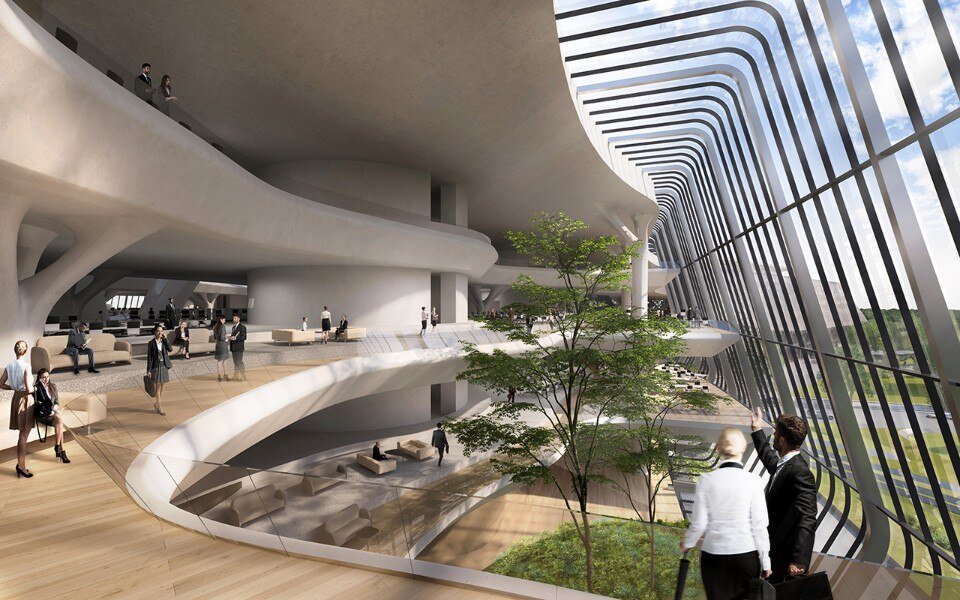[Mikhail Gorbachev (centre) running in red dressed in red with much nostalgia for green]
This is the title and caption of a painting by Emilio Isgrò. The sentence is written underneath a large, all-red rectangle. Seen today, the picture as it hangs in the meeting room of the landscape architects Land in Milan seems to have incredible premonitory powers – not just regarding the career trajectory of the landscapers Andreas Kipar and Giovanni Sala, who founded the Land office in 1990, but also regarding the future scenario in Moscow. Isgrò was connecting to the Kazimir Malevich painting Red Square (also titled Painterly Realism of a Peasant Woman in Two Dimensions), which along with Black Square synthesised almost one century ago the fundamentals of 20th century Russia. It is a playful reference, but a highly conceptual one with a humorous narrative addition. While Malevich's Suprematist geometry contains the codes of thought that oriented the development of the Soviet capital for a long time, Isgrò's caricatural running words show a complementary desire for nature. Unwittingly, they revealed in advance the present Russian metropolis, population 17 million.
Moscow's new course began in 2012, when Mayor Sergei Sobyanin called in Sergei Kuznetsov (1977) to become the city's chief architect. The latter geared his action toward creating a city on a human scale. In addition to contributions by internationally known architects, the post-planning of Moscow includes bio-remediation projects that are of the ordinary type, but not of the ordinary size. Among them is the One Million Trees programme that began in 2013, when 3,000 young trees and 25,000 shrubs were planted in local courtyards. Since then, over 100,000 trees and 2 million shrubs have been added to the cityscape.
Parallel to public programmes, private initiatives have gained momentum regarding the introduction of advanced digital technology, turning the city into a contemporary hub with a lifestyle to match.
After winning the 2014 competition for the design of the new Khodynka park, Land (with Mario Cucinella Architects, Thomas Schonauer and Leftloft) is developing for Sberbank (a state-owned Russian bank) what might be the largest garden city in the world. The impressive 450-hectare master plan concerns a peri-urban area west of the city. The design aims to create a fluid landscape in which three fingers of greenery depart from a bend in the Moskva River, tapering as they stretch toward the more densely populated area. The swathes of green are divided into different functional zones. This new type of "nature politics" neither aspires to obtain classic boundless space nor is it based on the infinite availability of natural resources. According to the landscape architect Andreas Kipar of the Land office, "The granulometric scale works well when the expanse of the natural landscape does not take on preponderant dimensions compared to the verticality of the built environment. That would prevent us from perceiving we are in urban surroundings."
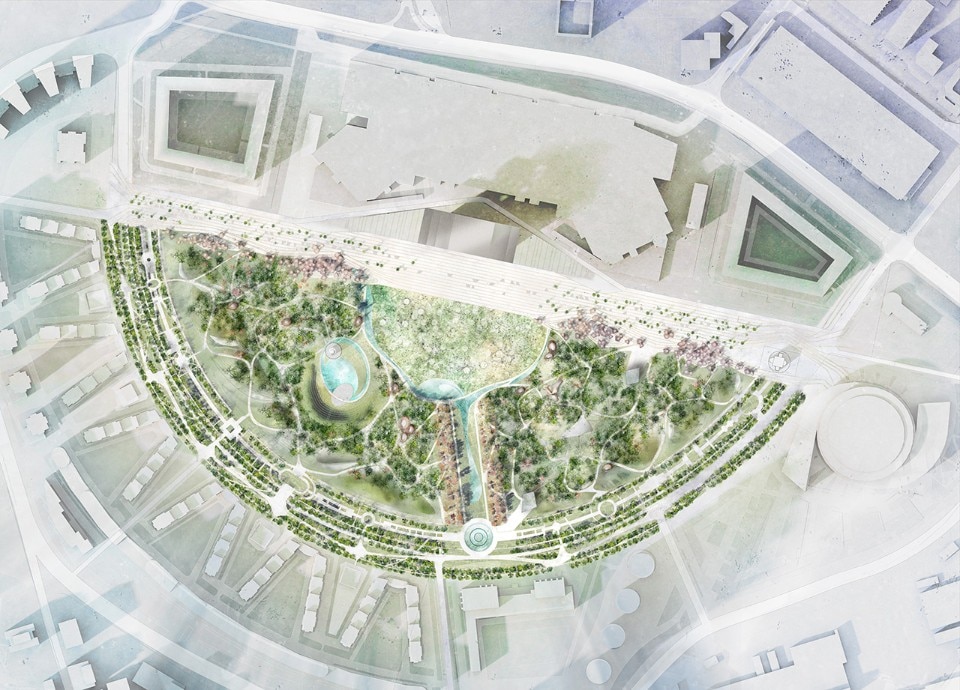
Similar principles guide Diller Scofidio + Renfro (with Hargreaves Associates and Citymakers) in its design for Zaryadye Park, the winning entry of a 2012 competition. It is the first large-scale park (14 hectares) to be built in Moscow in 50 years. Inaugurated in 2017 after 4 years of construction, the park lies along the Moskva River close to the Saint Basil Cathedral, Red Square and the Kremlin. It features a spectacular 70-metre V-shaped promenade that departs from two central points of the park and cantilevers panoramically over the river at the vertex. The site has rapidly become Moscow's new architectural logo, planting the city firmly in the global hemisphere of urban marketing.
The design overlays vegetal landscaping on top of built elements, including five pavilions, two amphitheatres and a philharmonic concert hall. The result is "natural urban planning" that introduces the novel concept of being able to follow instinctive and individual inclinations. This attention is not only given to the large components of the landscape, and the relation between empty space and built space, but also to the minute scale of materials, details, colours and layers. The vibrant pavement is laid out to unite the hard grid of stone with the soft texture of the grass, generating a blending of paths instead of sharp-edged subdivisions. This encourages visitors to wander freely over self-invented routes.
The interweaving of architecture and nature in the new Moscow cityscape is also found in a recent project by Renzo Piano Building Workshop called GES-2, covered extensively in Domus issue 1027, September 2018. A decommissioned electric power plant from the early 20th century has become a space for contemporary culture by turning upside down the traditional canons of content and container. The 2-hectare green area surrounding the building extends into the interior, inserting a small forest of birch trees between conceptual art installations and performances. The expositional device takes on a new form of energy by inverting the architectural nature of the original building. The four old brick smoke-stacks have been substituted by four steel chimney-stalks that capture clean air at 70 metres altitude and activate natural ventilation of the complex, reducing energy consumption.
Now that the RPBW construction site is coming to a close, the first steps are being taken on a design by Zaha Hadid Architects. In June 2018, it won the Sberbank competition for a new technology park at Skolkovo Innovation Centre, the Silicon Valley of Moscow. The park will host research in the fields of informatics, biomedicine, energy, nuclear science and the exploration of space. Here again, architecture is melded to the landscape. While the Renzo Piano process called for taking things apart and putting them back together in the manner of a mechanic, the London-based ZHA did what it is famous for. The plastic possibilities of shapes and technology are taken to extremes, emulating the complex qualities shared by natural and built organisms. On the one hand, the external landscape is densified around public spaces with paths and scattered fragments that look like chips off the main building. On the other hand, the main building is similar to a huge crystal resting on gigantic white-cement pillars that branch off inside over the full height like coral. This will give scientists and visitors an immersive environment worthy of Avatar.
